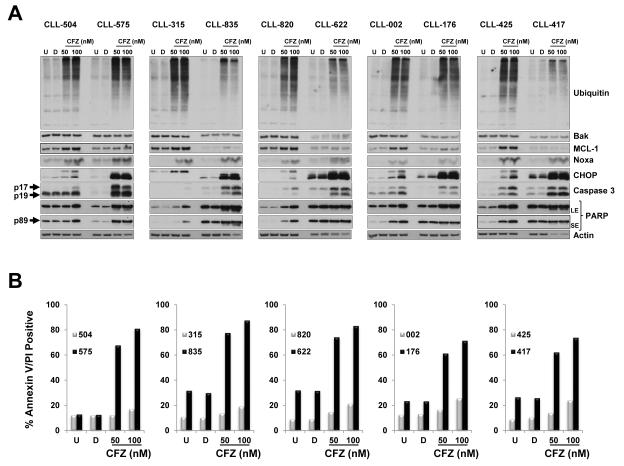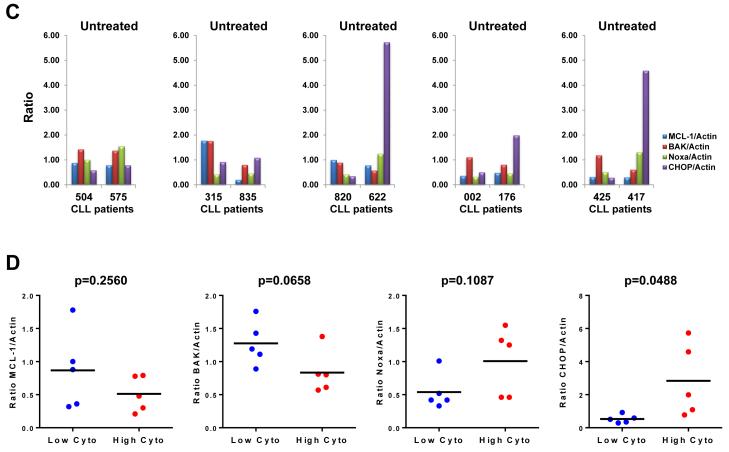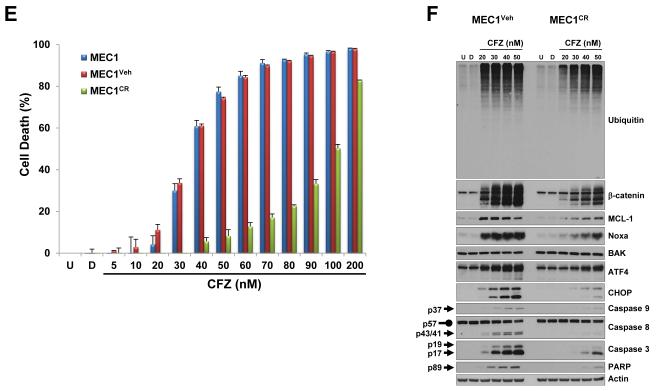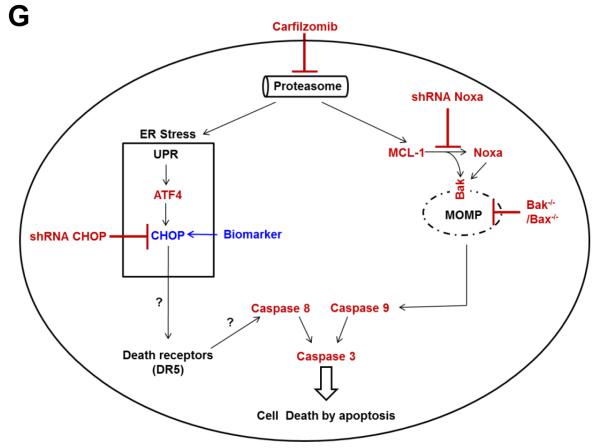Figure 6. CHOP protein expression is greater in CLL patient samples with high cytotoxicity response to carfilzomib.
(A and B) The CHOP protein expression level was highly increased after carfilzomib treatment in CLL patient samples, representing a high cytotoxic profile. Extract from cells treated as indicated from 5 CLL patients samples with low cytotoxic response (median cytotoxicity with 100 nM carfilzomib: 21% (range: 17%–20%); grey bars) and 5 CLL patient samples with high cytotoxic response (median cytotoxicity with 100 nM carfilzomib: 81% (range: 72%–88%); black bars) (B) were analyzed by immunoblot assays with the indicated antibodies (A). The cytotoxic effect of carfilzomib for the indicated conditions was assessed by annexin V/PI double positivity (B). U, untreated; D, DMSO; CFZ, carfilzomib; LE, long exposure; SE, short exposure. (C and D) The CHOP protein expression level at baseline is higher in CLL patients with high cytotoxic profile in response to carfilzomib. Baseline (untreated) immunoblot bands for the indicated proteins for each patient sample were estimated by densitometry analysis (C). Graph prism software was used to evaluate the mean (horizontal line) and p values (D). (E and F) Carfilzomib-resistant MEC1 showed less sensitivity to carfilzomib treatment. MEC1 were passed for 4 months with no selection (MEC1) or with stepwise increasing concentrations of carfilzomib (MEC1CR) or the corresponding amount of vehicle (MEC1Veh). Selection was removed for 10 days and then the indicated cell lines were treated as indicated for 24 h. Cell viability was determined using the CellTiter-Glo Luminescent Cell Viability assay (E). Corresponding cell pellets were subjected to immunoblot assays (F). Arrow and rounded arrow indicate cleaved and full-length of the corresponding protein, respectively. (G) A wiring diagram describing the pathways involved in carfilzomib-induced cell death in CLL. Carfilzomib inhibitory effect on the proteasome induced a proapoptotic response involving Noxa, MCL-1, Bax and Bak to engage the intrinsic apoptotic pathways as well as an unresolved unfolded protein response (UPR) involving the transcription factors ATF4 and CHOP. CHOP, a key mediator in ER stress-induced apoptosis, may regulate DR5 expression to activate the extrinsic apoptotic pathway and was identified as a possible prognostic marker to predict cytotoxic efficacy of carfilzomib in CLL. U, untreated; D, DMSO; CFZ, carfilzomib; ER, reticulum endoplasmic; UPR, unfolded protein response; MOMP, mitochondrial outer membrane permeabilization.




